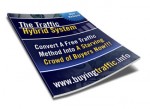 License Type: Master Resell Rights
License Type: Master Resell Rights  File Size: 885 KB
File Size: 885 KB File Type: ZIP
File Type: ZIP
 SKU: 2654
SKU: 2654  Shipping: Online Download
Shipping: Online Download
Ebook Sample Content Preview:
We have already seen a few of the advantages of selling low-priced products in previous chapters.
For example, when there is less money about, you are likely to sell far more low-priced products than you are going to be able to shift products with a premium ticket attached. Sometimes, this will give you access to markets that would otherwise be denied to you as we saw in the debt example.
Also, selling a low-priced product can often be a very effective ‘door opener’ for a more expensive product in the same marketplace. For instance, most online marketers have an ‘upsell’ product that they present to anyone who has bought a product from them.
If your ‘front end’ product is a low-ticket item, it naturally follows that it will sell in far greater numbers than would a higher-priced item, thus enabling you to present your ‘upsell’ product to a greater number of customers.
Most experienced marketers understand that once you have pulled a new customer into your business with a relatively low price product sale, the next thing to do is to start qualifying that customer. In particular, it is important to establish how much money that customer is able or willing to spend with your business, because the customers who are willing to spend most money are ultimately your most important customers.
Thus, the most effective upsell tactic is to present the new customer who has just purchased a front end, low-priced product with a complementary product with a significantly higher price tag attached. In this way, you can immediately ‘ask’ the new customer whether they are able or willing to spend more money with your business.








